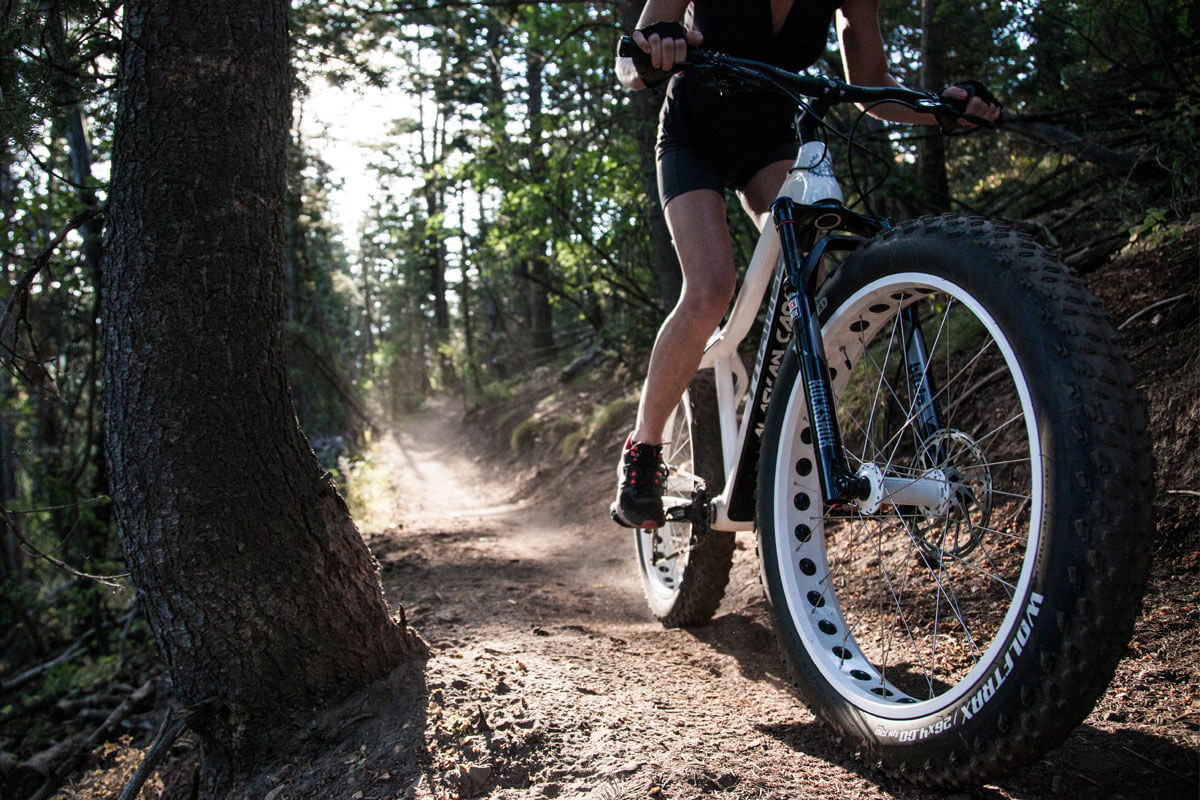Whether you’re a beginner road cyclist or have been riding for years, you likely want to improve the quality of your ride. For some cyclists, bringing in tubeless tires is the next step toward a faster, more comfortable ride. But the switch to tubeless isn’t for everyone. Let’s look at the basics of the tubeless tire trend to help you decide whether the tubeless switch is right for you.
What Are Tubeless Tires?
Traditional clincher tires are used with an internal tire tube. But tubeless tires, as name suggests, are used with no tubes at all. These tires are often used with a sealant that may make punctures less frequent, and the ability to ride tubeless at a lower pressure may mean that your ride ends up being more comfortable.
However, as we’ll see in a moment, riding tubeless isn’t without its problems. If you’ve been using tube tires all your life, there’s a definite learning curve to adapting to tubeless.
Benefits of Going Tubeless
Riding with tubeless tires has some attractive advantages. In short, switching to tubeless may mean that:
- You can ride at a lower pressure, which may, in turn, make your ride more comfortable.
- The right tubeless tires can make your bike lighter and faster.
- You will be less likely to experience punctures when tires are sealed properly.
The lower pressure benefit might be surprising. But tubeless manufacturer Hutchinson recommends riding at about 13 psi less than the pressure you would use on a tubular clincher. As anyone who has ridden at a few different pressures knows, this will make your ride smoother. But it also may improve traction around tight turns, which can work to your advantage on criteriums or even on especially winding bike routes.
Some tubeless tires may also increase your bike’s efficiency, although the industry is divided on this issue. Some cyclists will still insist that tubulars offer the best ride, while others believe that tubeless riding improves efficiency. It generally comes down to which benefits of tubeless bike tires you find most appealing – once you’ve found a benefit, like reduced puncture risk, that matters to you, it’s important to ask yourself whether the existing potential drawbacks of this technology outweigh the benefits or not.
One major selling point of tubeless tires is the fact that they are less likely to puncture on the road. We’ve all had a great ride interrupted by a punctured tube, and reducing the likelihood of tube punctures is something that nearly all cyclists can agree is a good thing.
Some benefits of tubeless tires are contingent on the proper use of sealant, however. Learning to use this specialized latex sealant may take a bit of time, and it is important to re-seal regularly in order to reduce the risks of tube puncture on the road. Like many things, putting in a small amount of maintenance time regularly can save you from a tire headache in the long run.
Why Shouldn’t I Go Tubeless?
For those currently mulling over whether or not to make the jump to tubeless tires, it’s important to consider the potential drawbacks of tubeless tires, too. While choosing tubular or tubeless is a personal choice that largely comes down to preference, the potential drawbacks of tubeless tires include the following:
- Because the technology is new, there is not yet a large variety of tires or compatible wheels.
- Tubeless tires require more maintenance.
- Many of these tires are heavier than many tubular clinchers.
The first drawback is a considerable one for those who like variety or who may prefer uncommon tire sizes. However, as support for tubeless tires grows, it is likely that they will become steadily more popular, creating an incentive for the manufacturer to increase their tubeless offerings.
The requirement of extra maintenance is a drawback that gives much pause. These tires are significantly more time-consuming to install than traditional tubular clinchers. Since most have stiff beads, it takes some practice and finesse to fit them to the rims. And if you choose to keep your current wheels and convert them to tubeless-compatible wheels, it may take some time to find the right conversion kit.
Lastly, while some cyclists have found lightweight tubeless tires that suit their bike, it is important to realize that tubeless tires, on average, are somewhat thicker and heavier than tubular tires. If lightweight tires are a priority for you, it may prove somewhat difficult to find a set that suits you, given the relatively small variety of available tires.
How to Convert to Tubeless Tires
If you’ve decided you want to take the plunge into the world of tubeless tires, knowing how to convert to tubeless is an important first step. And if you’re still deciding, learning what goes into making the switch may help keep you more informed.
Generally speaking, it’s best to find a set of wheels designed specifically for tubeless tires. This will ensure an optimal fit and an optimal ride. Of course, as any cyclist knows, wheels are expensive, and a high-quality set of both tires and rims is likely to cost you.
You can, alternatively, convert wheels compatible with tubes to tubeless-compatible wheels. This can take some time, and it’s best to get a high-quality kit from a reputable brand. Since you’re already saving on the cost of wheels, the slight extra cost of a reliable conversion kit is a great investment to make.
When in doubt about the conversion process, talking to a tubeless cyclist you know or consulting your local cycling shop for advice may be helpful. Seeking out expert guidance can help you ensure that your new tubeless setup will last years.
History of Tubeless Bike Tires
It was noted above that tubeless tires are a somewhat recent innovation. And while they were only created recently, they nonetheless already have an interesting history involving the collaboration of multiple cycling disciplines and tire manufacturers.
Tubeless technology was first released for mountain bikes in the year 1999. Soon after its release, three major tire manufacturers – Michelin, Hutchinson, and Mavic – worked together to create a standard system of tires and tubes. This system, which became known as Universal System Tubeless, or UST, helped ensure compatibility of tires and wheels. It was still limited to usage in mountain bikes, but a stye technology became more popular, it was adapted for use in road cycling and triathlons.
Stan’s NoTubes was the next major line of tubeless tires, and its advent spurred the popularity of tubeless systems even further. Many competitive cyclists, including Olympians and World Champions, used Stan’s successfully, and this made the brand’s acclaim, as well as the general opinion on tubeless tires, to shift in a positive direction. Since this development, more companies have offered tubeless tires and wheels, and still other manufacturers offer conversion kits to help tubular riders convert to tubeless tires.
While some cycling bloggers are convinced that tubeless tires will one day become the default tire type (kind of like tubular tires are today), others advocate a wait-and-see approach. But at least for now, tubeless versus tubular is, more than anything, a question of personal taste.
In Conclusion
While none of us have crystal balls to help us figure out whether tubeless technology will take over the world of cycling tires, we do know that today’s cyclists have a choice between two tire technologies. Tubeless tires offer some excellent advantages, including a reduced risk of puncture. But they also require more maintenance, and there are currently fewer varieties of them to purchase. Is riding tubeless right for you?
Shop The House for tubeless compatible tires and wheels.
Sources:
https://www.bicycling.com/bikes-and-gear-features/how-it-works/should-you-go-tubeless
http://www.icebike.org/tubeless-bike-tires/








